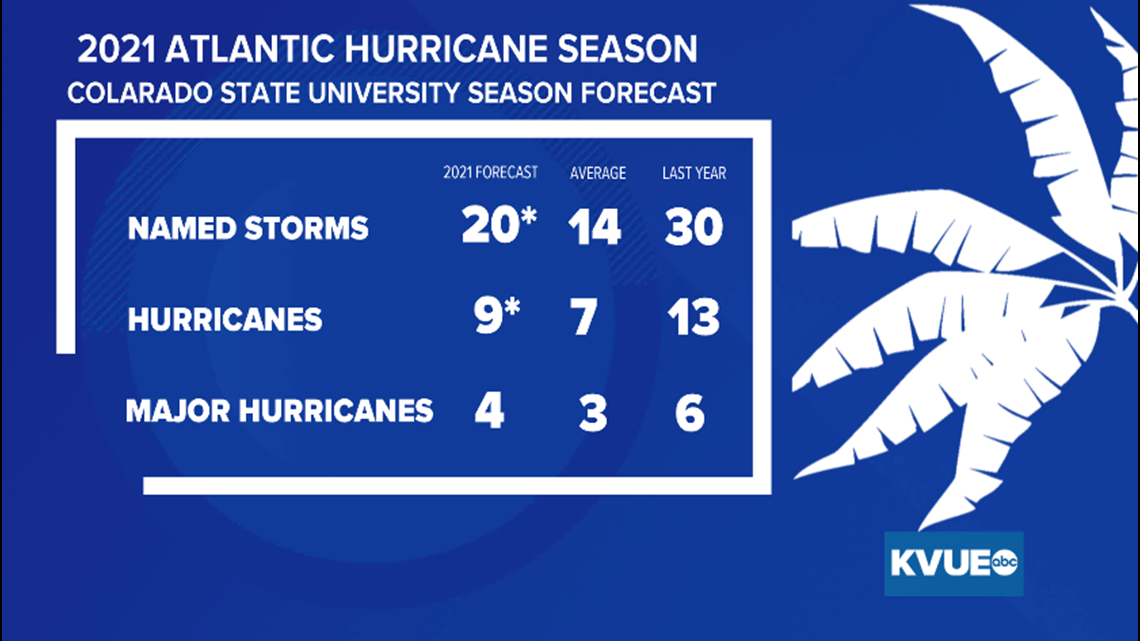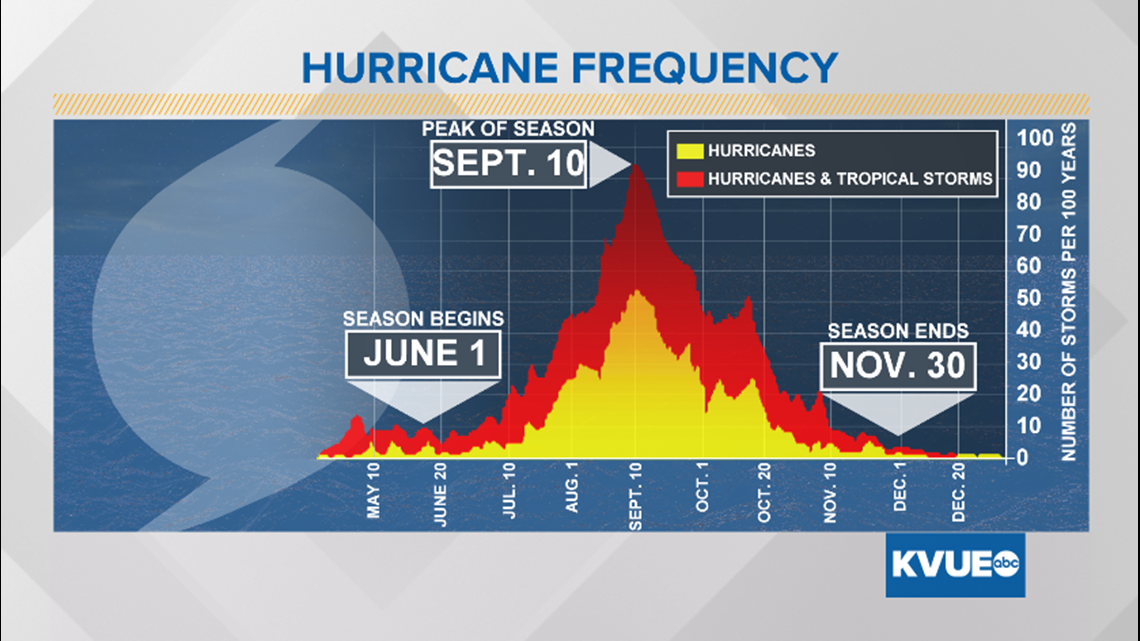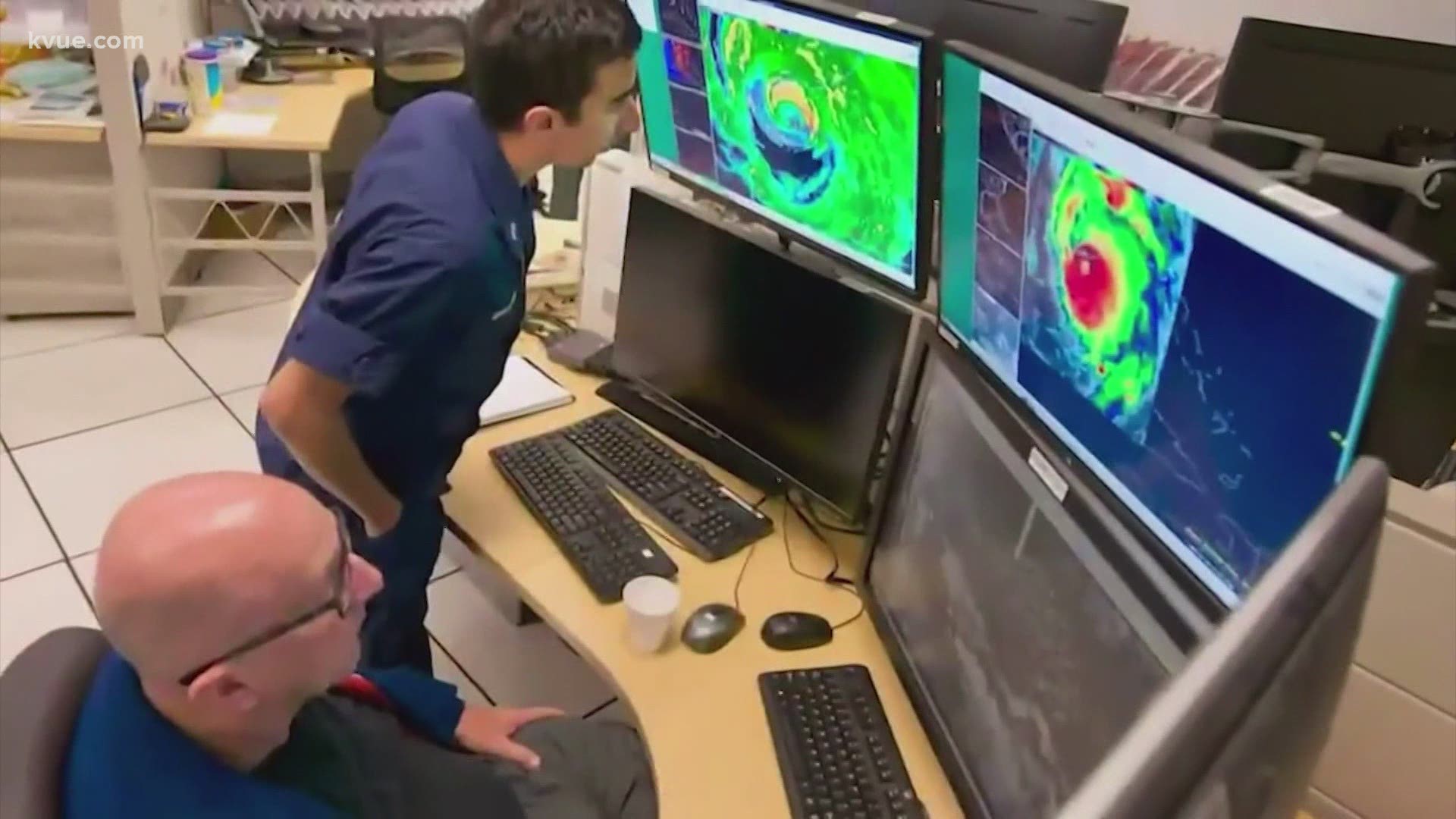FORT COLLINS, Colo. — Each year, Dr. Philip Klotzbach and the team of meteorologists at Colorado State University issue a seasonal outlook for the upcoming hurricane season. These predictions are also updated as the season unfolds.
In the latest update on July 8, the team continued to call for an active Atlantic hurricane season and increased the prediction for the number of named storms and hurricanes. The updated forecast now calls for 20 named storms, nine hurricanes and four major hurricanes.
With the formation of Elsa, the season has now seen five named storms, so the forecast calls for an additional 15 named storms. The updated forecast cites the development and intensification of Elsa in the tropical Atlantic as one of the predictors of a more active than usual season.


Other contributors to an active hurricane season include near to slightly above normal sea surface temperatures in the tropical Atlantic, and the absence of El Niño conditions in the Pacific.
El Niño is the warm phase of the El Niño - Southern Oscillation, or ENSO, and refers to warmer-than-average sea surface temperatures in the equatorial Pacific off the coast of South America. El Niño conditions typically correspond to higher wind shear in the Atlantic, which creates an unfavorable environment for hurricanes. Thus the absence of El Niño makes it easier for hurricanes to form and strengthen.
We are currently experiencing neutral ENSO conditions, and this is expected to continue through much of the hurricane season. In addition, the current sea surface temperatures are mostly at normal or above-normal values in the development regions of the Atlantic. This also supports tropical development.
It's important to realize that you should prepare for each hurricane season in the same way, regardless of the seasonal outlook. These outlooks are educated forecasts based on pre-existing weather conditions but are not a guarantee that hurricanes will or will not develop. It only takes one storm to have a high impact on your life, so it's important to always have a plan, especially in coastal areas.
Seasonal hurricane forecasts increase in accuracy as we get closer to the peak of the season. Remember that hurricane season begins June 1 and continues through the end of November. The peak of hurricane season is Sept. 10.


The KVUE Storm Team will continue to monitor the tropics closely.

